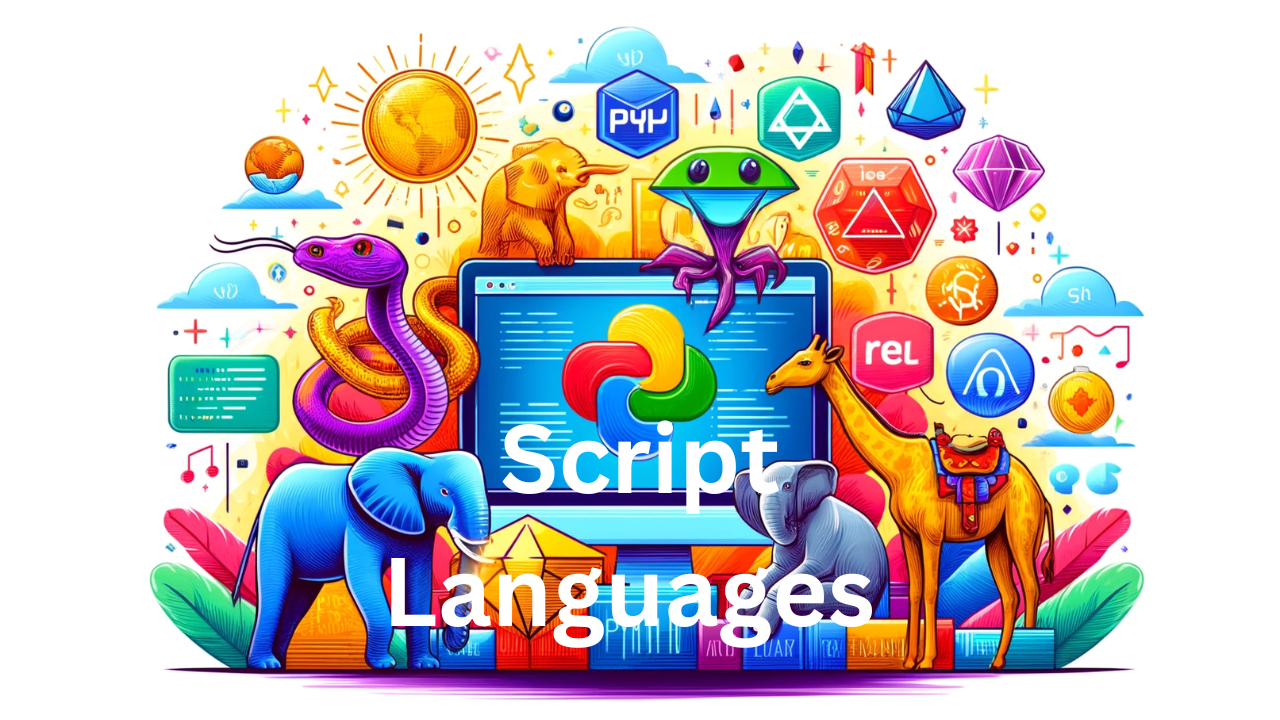
Scripting languages are essential tools for web development, automation, and more. But what exactly are they? And what types are there? Let’s dive in and explore the world of scripting languages in simple terms with some cool examples!
What Are Scripting Languages?
Scripting languages are used to write scripts, which are sets of instructions that automate tasks. Unlike traditional programming languages, scripting languages don’t require a compilation step. This means scripts are usually interpreted directly by a runtime environment.
Why Use Scripting Languages?
- Ease of use: Scripting languages are generally easier to write and read.
- Quick development: They allow for rapid development and testing.
- Flexibility: Great for automating repetitive tasks and handling complex workflows.
Guide to R Programming Language you need to know.
Types of Scripting Languages
There are several types of scripting languages, each with its own strengths and typical use cases. Here, we’ll cover some of the most popular ones: JavaScript, Python, PHP, Ruby, and Perl.
1. JavaScript
Overview: JavaScript is a widely-used scripting language primarily for web development. It runs in the browser and can create dynamic and interactive web pages.
Example:
function greet(name) {
return `Hello, ${name}!`;
}
console.log(greet('World'));Uses:
- Enhancing web pages with interactive features
- Building web applications
- Server-side scripting with Node.js
2. Python
Overview: Python is known for its simplicity and readability. It’s used in web development, data analysis, artificial intelligence, scientific computing, and more.
Example:
def greet(name):
return f"Hello, {name}!"
print(greet('World'))Uses:
- Web development (using frameworks like Django and Flask)
- Data science and machine learning
- Automation and scripting
3. PHP
Overview: PHP is a server-side scripting language designed for web development but also used as a general-purpose programming language.
Example:
<?php
function greet($name) {
return "Hello, $name!";
}
echo greet('World');
?>Uses:
- Creating dynamic web pages
- Server-side scripting
- Building e-commerce platforms
4. Ruby
Overview: Ruby is known for its elegant syntax that’s easy to read and write. It’s the language behind the popular Ruby on Rails framework.
Example:
def greet(name)
"Hello, #{name}!"
end
puts greet('World')Uses:
- Web development (using Ruby on Rails)
- Automation and scripting
- Building web applications
5. Perl
Overview: Perl is a powerful and flexible scripting language often used for text processing and system administration tasks.
Example:
sub greet {
my $name = shift;
return "Hello, $name!";
}
print greet('World'), "\n";Uses:
- System administration
- Web development
- Network programming
Is English the New Programming Language?
Choosing the Right Scripting Language
Selecting the right scripting language depends on your specific needs and goals. Here are some tips to help you decide:
- For web development: JavaScript (client-side), PHP, or Ruby
- For data science and AI: Python
- For text processing and system tasks: Perl
- For general-purpose scripting: Python or Ruby
Conclusion: The World of Scripting Languages
Scripting languages are versatile and powerful tools in the world of programming. Whether you’re enhancing a web page with JavaScript, automating tasks with Python, or building a dynamic website with PHP, there’s a scripting language out there for you. Each has its own unique strengths and is suited to different tasks, making it important to choose the right one for your specific needs.

